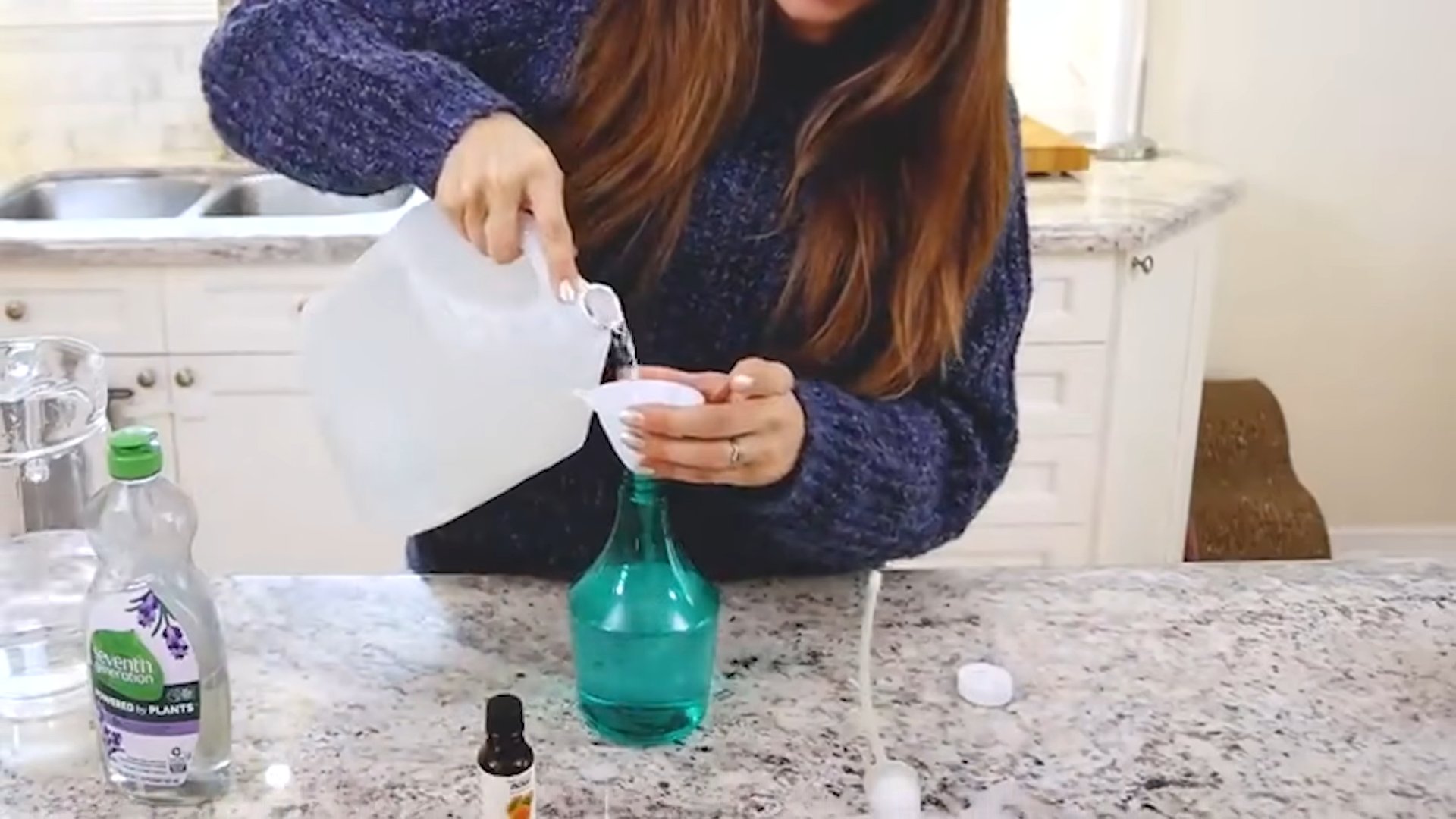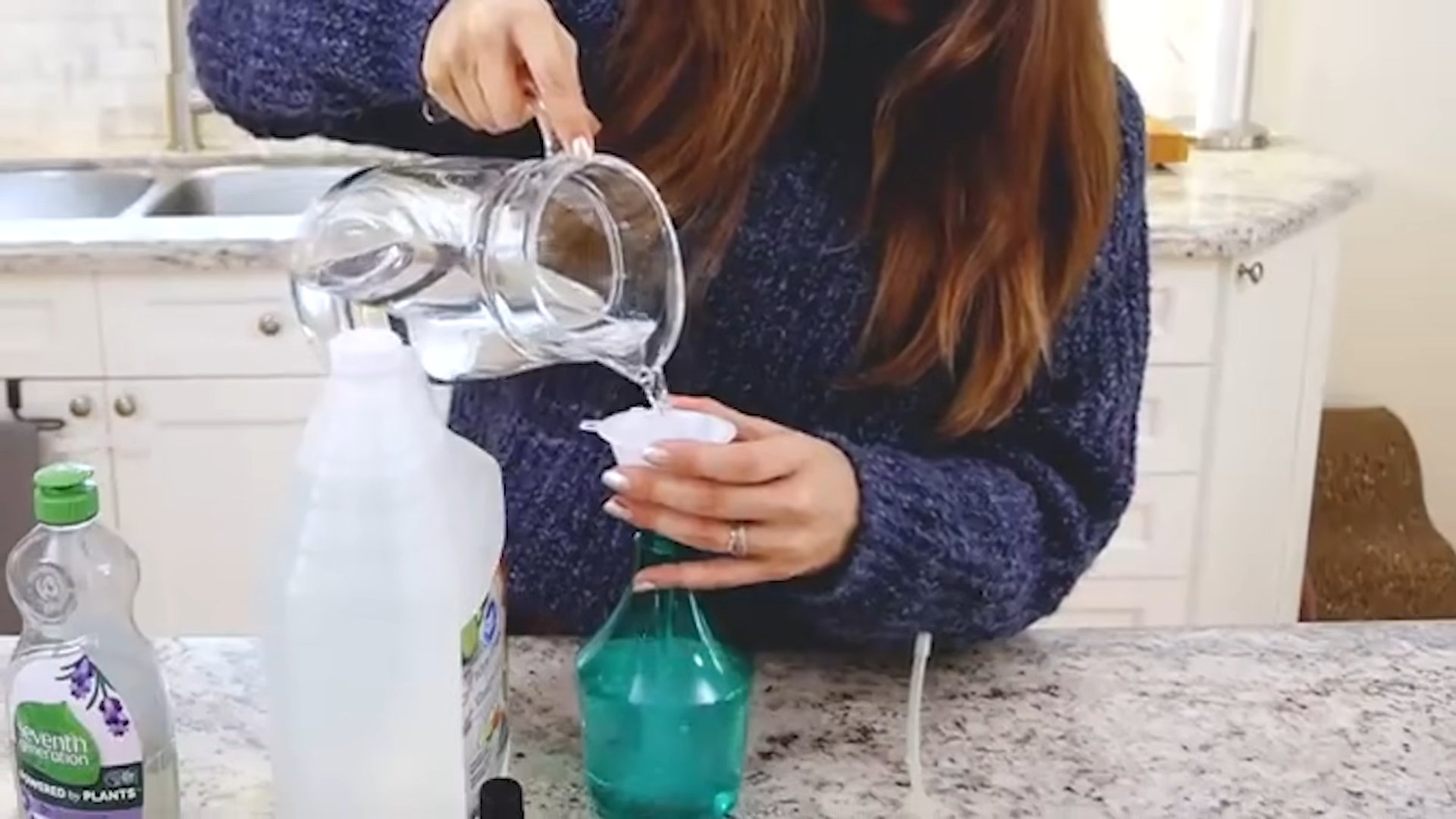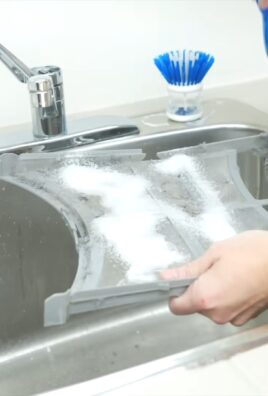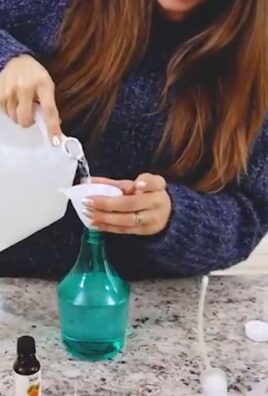DIY streak free glass cleaner: Are you tired of looking at smudged, streaky windows and mirrors? I know I was! It’s incredibly frustrating to spend time cleaning, only to be left with a less-than-perfect result. But fear not, fellow cleaning enthusiasts! This isn’t just another cleaning guide; it’s your ticket to sparkling, crystal-clear glass, all thanks to a simple, homemade solution.
The quest for perfectly clean glass is nothing new. Throughout history, people have experimented with various concoctions, from vinegar-based solutions used by our grandmothers to the modern chemical cleaners lining store shelves. But what if I told you that the best solution is often the simplest and most eco-friendly?
In today’s world, we’re all looking for ways to save money, reduce our environmental impact, and gain a little more control over the products we use in our homes. That’s where this DIY streak free glass cleaner comes in. Not only is it incredibly effective, but it’s also budget-friendly and made with ingredients you likely already have in your pantry. Say goodbye to expensive, chemical-laden cleaners and hello to a sparkling, streak-free shine that you can achieve yourself! I’m excited to share this simple yet powerful recipe with you, so let’s get started!

DIY Streak-Free Glass Cleaner: Say Goodbye to Smudges!
Okay, let’s be honest, store-bought glass cleaner can be a real letdown. You spray, you wipe, and you’re left with annoying streaks that seem to mock your cleaning efforts. I’ve been there, trust me! That’s why I decided to ditch the commercial stuff and create my own streak-free glass cleaner. And guess what? It’s super easy, incredibly effective, and uses ingredients you probably already have in your pantry!
This DIY glass cleaner is not only budget-friendly but also eco-friendly. You’re reducing plastic waste and avoiding harsh chemicals that can be harmful to your health and the environment. Plus, you’ll get that satisfying feeling of accomplishment knowing you made something awesome yourself!
What You’ll Need: The Ingredient Rundown
Before we dive into the mixing magic, let’s gather our supplies. Here’s what you’ll need to create your own streak-free glass cleaner:
* Spray Bottle: An empty spray bottle is essential. I recommend using a recycled one to be extra eco-conscious. Make sure it’s clean and dry before you start. A 16-ounce bottle is a good size.
* Distilled Water: This is key to avoiding streaks! Tap water contains minerals that can leave residue on your glass. Distilled water is pure and clean, ensuring a sparkling finish.
* White Vinegar: The star of the show! White vinegar is a natural cleaner and degreaser. Its acidity helps to cut through grime and dirt, leaving your glass spotless.
* Rubbing Alcohol (Isopropyl Alcohol): This helps the cleaner evaporate quickly, preventing streaks. Look for a concentration of 70% or higher.
* Essential Oil (Optional): While not necessary for cleaning power, a few drops of your favorite essential oil can add a pleasant scent to your cleaner. Lemon, lavender, or tea tree oil are great choices.
* Measuring Cups and Spoons: For accurate measurements, grab your measuring cups and spoons.
* Microfiber Cloths: Ditch the paper towels! Microfiber cloths are lint-free and won’t leave streaks behind. They’re also reusable, making them a sustainable choice.
Mixing the Magic: Step-by-Step Instructions
Now for the fun part! Let’s get mixing and create our streak-free glass cleaner.
1. Prepare Your Spray Bottle: Make sure your spray bottle is clean and dry. Any residue inside the bottle can contaminate your cleaner and affect its performance.
2. Add Distilled Water: Pour 1 cup of distilled water into the spray bottle.
3. Add White Vinegar: Next, add 1/4 cup of white vinegar to the bottle. The vinegar will help to cut through grease and grime.
4. Add Rubbing Alcohol: Now, add 1/4 cup of rubbing alcohol (isopropyl alcohol) to the mixture. This will help the cleaner evaporate quickly and prevent streaks.
5. Add Essential Oil (Optional): If you’re using essential oil, add 5-10 drops to the bottle. Be careful not to add too much, as it can leave a residue.
6. Shake Well: Secure the spray nozzle onto the bottle and shake well to combine all the ingredients.
Cleaning Like a Pro: Application Tips and Tricks
Now that you have your homemade streak-free glass cleaner, let’s talk about how to use it effectively.
1. Prepare the Surface: Before you start spraying, remove any loose dirt or debris from the glass surface. You can use a dry microfiber cloth or a brush to do this.
2. Spray Sparingly: A little goes a long way! Spray the glass cleaner lightly onto the surface. Avoid oversaturating the glass, as this can lead to streaks.
3. Wipe with a Microfiber Cloth: Immediately wipe the glass with a clean, dry microfiber cloth. Use a circular motion to spread the cleaner evenly, then switch to a straight up-and-down motion to remove any remaining residue.
4. Flip the Cloth: If the cloth becomes saturated, flip it to a clean, dry section. You may need to use multiple cloths for larger surfaces.
5. Buff to a Shine: For an extra sparkling finish, buff the glass with a clean, dry microfiber cloth after wiping.
Where to Use Your DIY Glass Cleaner: Versatility at Its Finest
This homemade glass cleaner isn’t just for windows! It’s incredibly versatile and can be used on a variety of surfaces. Here are some ideas:
* Windows: Of course! This is what it’s designed for.
* Mirrors: Get rid of those pesky fingerprints and smudges.
* Glass Shower Doors: Combat soap scum and water spots.
* Glass Tabletops: Keep your furniture looking its best.
* Car Windows: Inside and out! Just be careful not to get it on the car’s paint.
* Stainless Steel Appliances: Remove fingerprints and smudges for a polished look.
* Chrome Fixtures: Shine up your faucets and showerheads.
Troubleshooting: Common Issues and Solutions
Even with the best recipe, you might encounter a few minor issues. Here’s how to troubleshoot them:
* Streaks: If you’re still seeing streaks, make sure you’re using distilled water and clean microfiber cloths. Also, avoid oversaturating the glass with cleaner.
* Residue: If you notice a residue, you might be using too much essential oil. Reduce the amount you’re adding or skip it altogether.
* Smell: The vinegar smell can be strong at first, but it will dissipate quickly. If you’re sensitive to smells, add more essential oil or open a window for ventilation.
* Cloudiness: If the cleaner appears cloudy, it could be due to hard water or impurities in the ingredients. Try using a different brand of distilled water or filtering your tap water before using it.
Safety First: Important Precautions
While this DIY glass cleaner is made with natural ingredients, it’s still important to take some precautions:
* Keep Out of Reach of Children: Store the cleaner in a safe place where children and pets cannot access it.
* Avoid Contact with Eyes: If the cleaner gets in your eyes, rinse immediately with plenty of water.
* Test on a Small Area: Before using the cleaner on a large surface, test it on a small, inconspicuous area to ensure it doesn’t damage the material.
* Don’t Mix with Other Cleaners: Never mix this cleaner with other cleaning products, as it could create harmful fumes.
* Use in a Well-Ventilated Area: When cleaning, make sure the area is well-ventilated to avoid inhaling fumes.
Storage Tips: Keeping Your Cleaner Fresh
To keep your DIY glass cleaner fresh and effective, follow these storage tips:
* Store in a Cool, Dark Place: Avoid storing the cleaner in direct sunlight or heat, as this can degrade the ingredients.
* Label the Bottle: Clearly label the spray bottle with the name of the cleaner and the date it was made.
* Use Within 6 Months: While the cleaner won’t necessarily go bad, its effectiveness may decrease over time. It’s best to use it within 6 months of making it.
Why This Recipe Works: The Science Behind the Sparkle
So, what makes this DIY glass cleaner so effective? It’s all about the ingredients and how they work together.
* Distilled Water: As mentioned earlier, distilled water is free of minerals and impurities that can cause streaks.
* White Vinegar: Vinegar is a natural acid that helps to dissolve dirt, grease, and grime. It also has antibacterial properties.
* Rubbing Alcohol: Rubbing alcohol is a solvent that helps the cleaner evaporate quickly, preventing streaks. It also has disinfecting properties.
* Essential Oil: While not essential for cleaning, essential oils can add a pleasant scent and have additional benefits, such as antibacterial or antifungal properties.
Variations: Customize Your Cleaner
Want to tweak the recipe to suit your specific needs? Here are a few variations you can try:
* For Extra Grime: If you’re dealing with particularly stubborn grime, add a teaspoon of borax to the mixture. Borax is a natural mineral that helps to boost the cleaning power of the vinegar.
* For Hard Water: If you have hard water, you can add a tablespoon of lemon juice to the mixture. Lemon juice is a natural acid that helps to dissolve mineral deposits.
* For a Fresh Scent: Experiment with different essential oils to find your favorite scent. Citrus oils like lemon, orange, and grapefruit are great for a refreshing clean.
Cost Comparison: Save Money with DIY
One of the biggest benefits of making your own glass cleaner is the cost savings. Let’s compare the cost of this

Conclusion
So, there you have it! Ditching the store-bought glass cleaner and embracing this simple, yet incredibly effective, DIY streak free glass cleaner is more than just a cost-saving measure; it’s a step towards a healthier home and a sparkling clean view. We’ve walked you through the easy process, highlighting the benefits of using readily available ingredients that are both gentle on the environment and tough on grime.
Why is this DIY trick a must-try? Because it delivers professional-quality results without the harsh chemicals and lingering odors often associated with commercial cleaners. Imagine windows, mirrors, and glass surfaces so clear they practically disappear. No more unsightly streaks, no more hazy residue – just pure, unadulterated shine. Plus, you have complete control over the ingredients, ensuring a safe and healthy environment for your family and pets.
But the beauty of this DIY approach doesn’t stop there. Feel free to experiment and personalize your cleaner to suit your specific needs and preferences. For instance, if you’re dealing with particularly stubborn hard water stains, consider adding a tablespoon of lemon juice to the mix for its natural acidic cleaning power. Or, if you prefer a more fragrant cleaning experience, a few drops of your favorite essential oil, such as lavender or eucalyptus, can add a subtle and refreshing scent to your home. Just be sure to use essential oils sparingly, as too much can leave a residue.
Another variation to consider is the type of alcohol you use. While isopropyl alcohol (rubbing alcohol) is readily available and works perfectly well, you can also use vodka for an even more eco-friendly option. Vodka is essentially just diluted ethanol, and it’s a great alternative if you’re looking to minimize your use of synthetic chemicals.
The key to achieving truly streak-free results lies not only in the cleaner itself but also in the application technique. Always use a clean, lint-free microfiber cloth for wiping. Avoid using paper towels, as they can often leave behind small fibers that contribute to streaks. And remember to spray the cleaner sparingly – a little goes a long way. Over-saturating the surface can actually make it more difficult to achieve a streak-free finish.
We are confident that once you try this DIY streak free glass cleaner, you’ll never go back to store-bought alternatives. It’s economical, effective, and environmentally friendly – a winning combination for any homeowner.
So, what are you waiting for? Gather your ingredients, mix up a batch of this amazing cleaner, and prepare to be amazed by the results. We encourage you to try this DIY trick and share your experience with us! Let us know in the comments below how it worked for you, what variations you tried, and any tips or tricks you discovered along the way. We love hearing from our readers and learning from your experiences. Together, we can create a community of clean, healthy, and happy homes. Share your before and after photos on social media using #DIYStreakFreeGlassCleaner – we can’t wait to see your sparkling results!
Frequently Asked Questions (FAQ)
1. What are the benefits of making my own DIY streak free glass cleaner compared to buying commercial cleaners?
There are several compelling benefits to making your own glass cleaner. Firstly, it’s significantly more cost-effective. The ingredients – vinegar, rubbing alcohol, and water – are inexpensive and readily available. Secondly, it’s much healthier for you and the environment. Commercial glass cleaners often contain harsh chemicals like ammonia and synthetic fragrances, which can irritate your skin, eyes, and respiratory system. By making your own cleaner, you control the ingredients and avoid these harmful substances. Finally, it’s customizable. You can adjust the recipe to suit your specific needs and preferences, adding essential oils for fragrance or lemon juice for extra cleaning power.
2. What type of alcohol should I use for the DIY glass cleaner?
Isopropyl alcohol (rubbing alcohol) is the most commonly used type of alcohol for DIY glass cleaner due to its availability and effectiveness. Look for a concentration of 70% or higher. However, you can also use vodka as an alternative. Vodka is essentially diluted ethanol and works well as a cleaning agent. It’s a good option if you’re looking for a more eco-friendly alternative to isopropyl alcohol. Avoid using denatured alcohol, as it can contain additives that may leave a residue on your glass.
3. Can I use tap water for the DIY glass cleaner, or do I need to use distilled water?
While tap water can be used, distilled water is highly recommended for the best results. Tap water often contains minerals and impurities that can leave streaks or spots on your glass surfaces. Distilled water is purified and free of these contaminants, ensuring a cleaner, streak-free finish. If you don’t have distilled water, you can boil tap water and let it cool completely before using it. This will help to reduce the mineral content.
4. What type of cloth should I use to wipe the glass after spraying the cleaner?
A clean, lint-free microfiber cloth is essential for achieving streak-free results. Microfiber cloths are designed to trap dirt and grime without leaving behind any fibers. Avoid using paper towels, as they can often leave behind small fibers that contribute to streaks. You can also use a clean, soft cotton cloth, but microfiber is generally preferred for its superior cleaning and streak-free properties. Make sure the cloth is clean and dry before using it.
5. How often should I clean my windows and mirrors with this DIY glass cleaner?
The frequency of cleaning depends on several factors, including the location of your windows and mirrors, the amount of dust and dirt in your environment, and your personal preferences. Generally, cleaning your windows and mirrors every few weeks is sufficient to keep them looking clean and clear. However, if you live in a dusty area or have pets, you may need to clean them more frequently.
6. Can I use this DIY glass cleaner on other surfaces besides windows and mirrors?
Yes, this DIY glass cleaner can be used on a variety of other surfaces, including glass stovetops, shower doors, and stainless steel appliances. However, it’s always a good idea to test the cleaner on a small, inconspicuous area first to ensure that it doesn’t damage the surface. Avoid using it on delicate surfaces like painted walls or wood furniture, as the vinegar can potentially damage the finish.
7. How should I store the DIY glass cleaner?
Store the DIY glass cleaner in a clean, labeled spray bottle. Keep it out of reach of children and pets. It’s best to store it in a cool, dark place to prevent the ingredients from degrading. The cleaner should last for several months if stored properly. If you notice any discoloration or separation of the ingredients, it’s best to discard the cleaner and make a fresh batch.
8. My DIY glass cleaner is leaving streaks. What am I doing wrong?
There are several reasons why your DIY glass cleaner might be leaving streaks. First, make sure you’re using distilled water and a clean, lint-free microfiber cloth. Second, avoid using too much cleaner. Over-saturating the surface can actually make it more difficult to achieve a streak-free finish. Third, make sure your cloth is clean and dry. A dirty or damp cloth can spread dirt and grime around, leaving streaks. Finally, try adjusting the ratio of ingredients. If you’re using too much vinegar, it can leave a residue. Try reducing the amount of vinegar in the recipe.
9. Can I add essential oils to the DIY glass cleaner?
Yes, you can add essential oils to the DIY glass cleaner for a more fragrant cleaning experience. Lavender, lemon, and eucalyptus are popular choices. However, be sure to use essential oils sparingly, as too much can leave a residue on your glass. A few drops are usually sufficient. Also, be aware that some essential oils can be irritating to the skin or respiratory system, so choose your oils carefully and use them in a well-ventilated area.
10. Is this DIY glass cleaner safe to use around pets and children?
Yes, this DIY glass cleaner is generally safe to use around pets and children, as it doesn’t contain any harsh chemicals or toxic ingredients. However, it’s still important to keep the cleaner out of reach of children and pets to prevent accidental ingestion. If your pet or child does ingest the cleaner, contact your veterinarian or poison control center immediately.




Leave a Comment